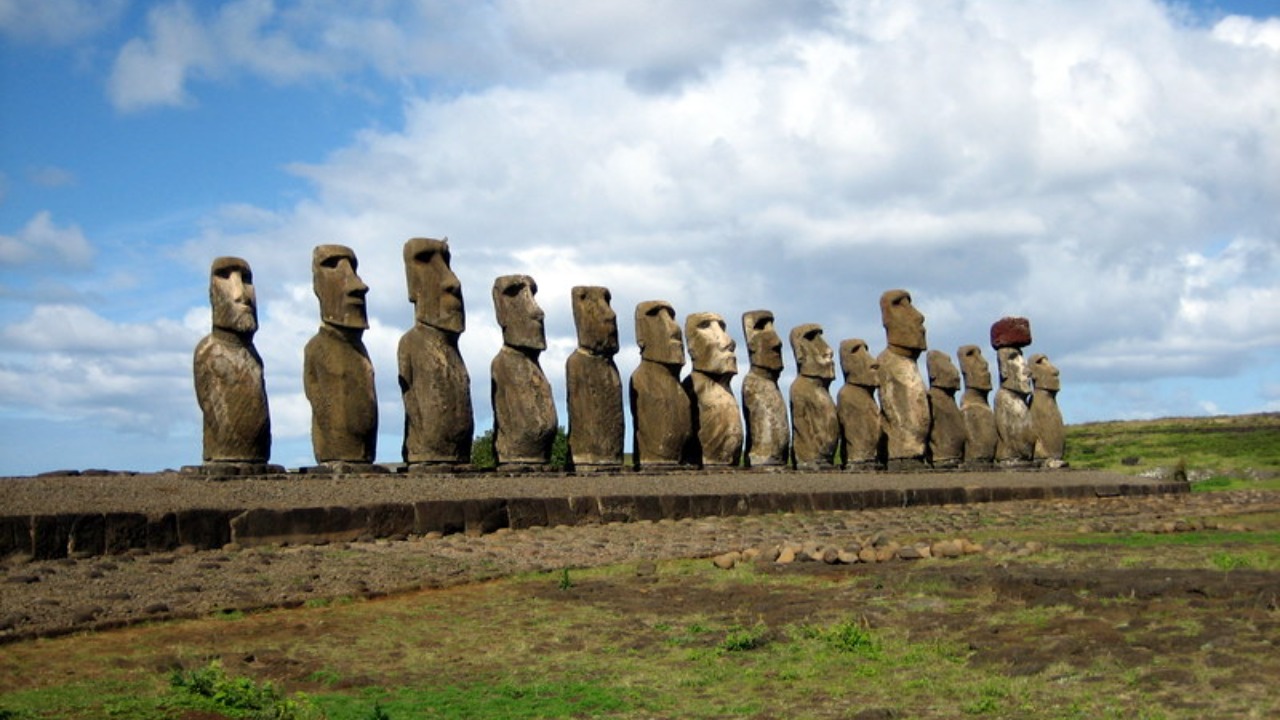
The iconic Moai statues of Rapa Nui, also known as Easter Island, have long fascinated researchers and tourists alike. Recent studies suggest that these massive stone figures may have been transported to their platforms by “walking” them upright using ropes, a method that could have required as few as 15 people. This theory, which leverages “pendulum dynamics,” challenges previous assumptions about ancient Polynesian engineering and offers a new perspective on how nearly 1,000 Moai were positioned across the island without the use of wheels or draft animals.
The Mystery of the Moai Statues
The Moai statues of Easter Island are a testament to the ingenuity of the Rapa Nui people. Nearly 1,000 statues, averaging 13 feet in height and weighing up to 80 tons, were carved from volcanic tuff between 1250 and 1500 CE. These statues were placed on ceremonial platforms known as ahu, with about 95% facing inland toward the villages rather than the sea. This orientation raises intriguing questions about how they were moved from quarries located up to 11 miles away. The massive Moai statues present an engineering puzzle that has captivated researchers for decades.
Evolution of Transportation Theories
Early 20th-century theories suggested that the Moai were transported by rolling them on logs or sledges. However, these ideas were dismissed due to the deforestation of Rapa Nui and the lack of suitable timber by the time Europeans arrived in 1722. In the 1980s, archaeologist Charles Love and engineer Pavel Pavel conducted experiments demonstrating that the Moai could be “walked” by rocking them side to side with ropes. Despite proving the concept, this method faced limitations in stability over long distances.
Oral traditions from Rapa Nui elders, documented in 19th-century ethnographic records, describe the statues as being made to “walk” with chanting and pulling. These accounts align with the idea that the statues were transported upright, a method that resonates with the cultural narratives of the island’s inhabitants.
Key Findings from the Latest Study
The latest research introduces the concept of “pendulum dynamics” to model the walking motion of the Moai. By attaching ropes to the statues’ “ears” or protruding headdresses, a swinging pendulum effect is created, allowing the statues to shift weight and step forward incrementally. Simulations indicate that statues weighing up to 10 tons could be moved with as few as 15 people, significantly reducing the workforce needed compared to previous estimates of 50 or more.
Evidence Supporting the Walking Method
Physical traces on Rapa Nui support the walking method theory. Some unfinished Moai at the Rano Raraku quarry have elongated bases, which are interpreted as adaptations for upright walking rather than lying flat. Modern replications further validate this technique. In 2012, researchers Terry Hunt and Carl Lipo conducted an experiment using a 10-foot, 5-ton replica, successfully moving it 100 yards with 18 people in under an hour. This experiment demonstrated the feasibility of the walking method, as detailed in reports about how the statues were walked to their platforms.
Implications for Ancient Rapa Nui Society
The walking method implies a sophisticated and resource-efficient society capable of mobilizing small groups for monumental tasks. This challenges the narrative of societal collapse due to overexploitation, suggesting instead that the Rapa Nui people were adept at managing their resources. The statues’ full-body designs, including hands and legs buried underground, may have aided in balance during transport, as suggested by the study. This insight into Rapa Nui’s Famous Moai Statues offers a revised understanding of their cultural and archaeological significance.
Overall, the new research on the Moai statues’ transportation methods not only sheds light on the engineering capabilities of the Rapa Nui people but also invites a reevaluation of their societal structure and resilience. As more studies emerge, our understanding of these enigmatic statues continues to evolve, offering fresh perspectives on one of the world’s most intriguing archaeological mysteries.